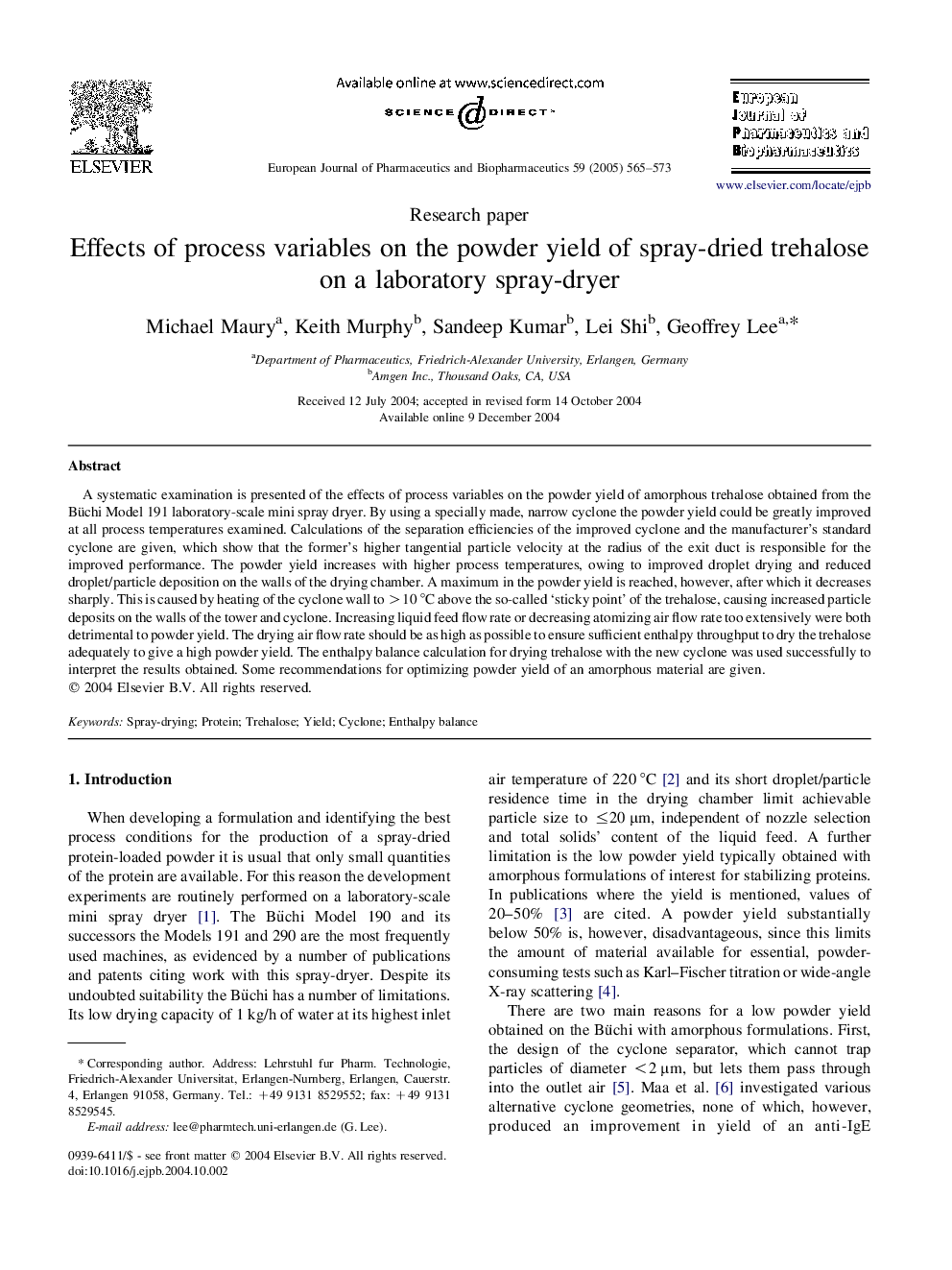| Article ID | Journal | Published Year | Pages | File Type |
|---|---|---|---|---|
| 9901523 | European Journal of Pharmaceutics and Biopharmaceutics | 2005 | 9 Pages |
Abstract
A systematic examination is presented of the effects of process variables on the powder yield of amorphous trehalose obtained from the Büchi Model 191 laboratory-scale mini spray dryer. By using a specially made, narrow cyclone the powder yield could be greatly improved at all process temperatures examined. Calculations of the separation efficiencies of the improved cyclone and the manufacturer's standard cyclone are given, which show that the former's higher tangential particle velocity at the radius of the exit duct is responsible for the improved performance. The powder yield increases with higher process temperatures, owing to improved droplet drying and reduced droplet/particle deposition on the walls of the drying chamber. A maximum in the powder yield is reached, however, after which it decreases sharply. This is caused by heating of the cyclone wall to >10 °C above the so-called 'sticky point' of the trehalose, causing increased particle deposits on the walls of the tower and cyclone. Increasing liquid feed flow rate or decreasing atomizing air flow rate too extensively were both detrimental to powder yield. The drying air flow rate should be as high as possible to ensure sufficient enthalpy throughput to dry the trehalose adequately to give a high powder yield. The enthalpy balance calculation for drying trehalose with the new cyclone was used successfully to interpret the results obtained. Some recommendations for optimizing powder yield of an amorphous material are given.
Related Topics
Life Sciences
Biochemistry, Genetics and Molecular Biology
Biotechnology
Authors
Michael Maury, Keith Murphy, Sandeep Kumar, Lei Shi, Geoffrey Lee,
